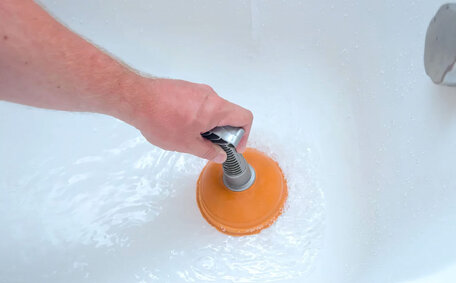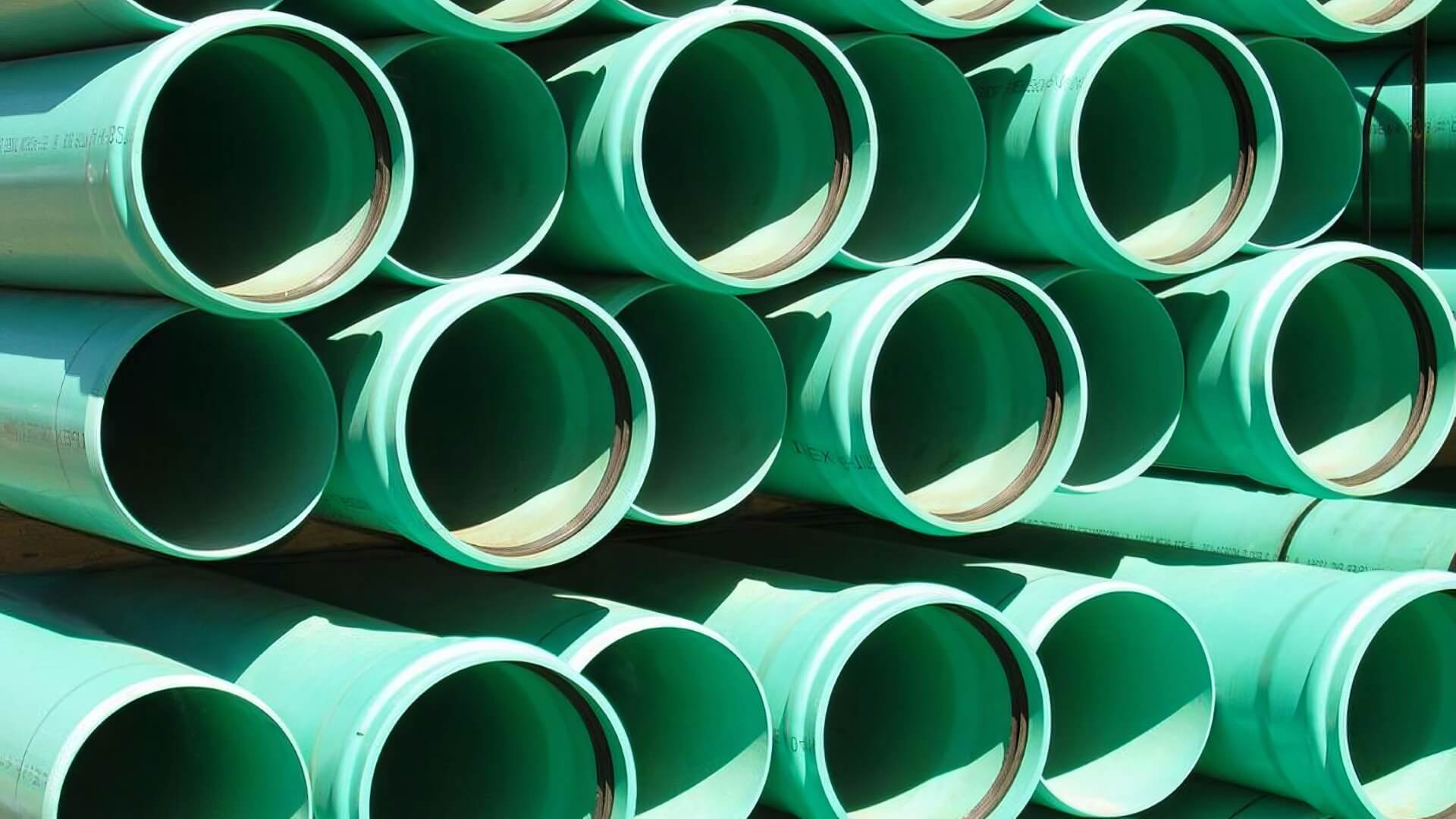What are mixing valves and how do they work?
Understanding mixing valves, including tempering valves and thermostatic mixing valves (TMVs), reveals how they blend hot and cold water in water systems to ensure a consistent and safe temperature upon delivery. Thermostatic mixing valves are vital in merging hot and cold water to prevent scalding and inhibit bacterial growth.
Tempering valves and TMVs feature an internal thermostatic element that measures and controls the water’s temperature by blending cold and hot water. When the hot water is too hot, the device feeds cold water into the mix, providing an even flow hot cold water to lower the temperature. Should the supply turn too cold, the valve decreases the cold mix to maintain a consistent temperature.
This regulation is vital for maintaining a stable water temperature as it exits the valve.
In the tempering valve’s mixing chamber, hot and cold water enter from opposite sides and blend together.
The thermostatic element of the valve adjusts itself based on the detected temperatures, ensuring precise water tempering as the water circulates through the system. The blended warm water then comes out, sustaining the hot water flows through a centre outlet pipe toward fixtures like shower bath or sinks.
Achieving the correct balance of hot and cold water is essential, as tempering valves help prevent scalding by maintaining water at a safely preset maximum temperature. Tempering valves are typically calibrated to deliver water no hotter than 50°C, complying with AS/NZS 3500 standards, and thereby reducing the risk of scalding. They also curb legionella bacteria growth by keeping water at higher temperatures than 60°C where it mixes.
For automatic temperature control, TMVs are more prevalent than basic tempering valves, and a licensed plumber can install these devices efficiently. Tempering valves necessitate manual adjustment with each change in water temperature. The TMV can self-adjust to deliver a steady, safe temperature regardless of fluctuations in hot or cold water together.
Types of mixing valves: TMVs vs tempering valves
There are two primary types of mixing valves to be familiar with: thermostatic mixing valves (TMVs) and basic tempering valves. The key differences between tempering them is how they regulate water your temperature with their threeway mixing capabilities.
TMVs tempering use a more precise method than basic tempering to maintain a constant preset outlet temperature by sensing the incoming water temperatures of hot and cold and automatically adjusting the mixing ratio. They self-adjust to manage pressure temperature and compensate for fluctuations in either water supply.
In contrast, tempering valves provide more basic water control temperature. They have a manual control valve that you can set to preset the mixed water temperature, but they don’t automatically self-adjust like TMVs. The water temperature will vary if there are changes in hot or cold water pressure or temperatures.
Owing to their consistent water temperature control, TMVs are essential for commercial plumbing, deemed safer and often mandatory in environments like schools, nursing homes, hospitals, and kitchens. Tempering valves provide acceptable control in lower-risk residential settings like your home, with installing tmv being more suited for commercial environments.
Thermostatic valves respond quickly to abrupt temperature changes when mixing hot and cold water. Their thermostatic element senses minute variations and adjusts water together within seconds, while manual tempering valves take longer than a few moments to reset. This makes TMVs better for applications where hot water use fluctuates rapidly.
Overall, valves TMVs can offer more accurate and consistent temperature control. Their automated self-regulation ensures water heating systems deliver a consistent, safe temperature amidst variable supply conditions. This makes them the preferred choice for most plumbing applications today.
Where are mixing valves installed and why are they important?
Mixing valves are commonly installed in bathrooms for your shower, kitchens, and laundry rooms - critical components of a hot water system. They play a critical role in delivering safe temperatures to fixtures like showers, sinks, and washing machines.
In bathrooms, regular maintenance ensures that the shower valve properly balances the hot and cold water supply, thus preventing scalding. They mix hot and cold inputs to ensure water temperatures do not exceed 50°C per AS/NZS 3500 standards. This protects children and seniors from painful and dangerous burns.
In kitchens and laundry rooms, TMVs on taps and sinks provide consistent hot water, essential for personal hygiene activities like washing hands, dishes, and clothing. The valves used ability to control water temperatures prevents bacteria such as Legionella from thriving in the warm water zone of 20°C to 50°C.
Public facilities depend on installed TMVs to ensure safe water delivery. Schools, universities, hospitals, nursing homes, stadiums and commercial buildings need TMVs to maintain safe water delivery. Mandatory standards dictate the installation of hot water tempering valves in high-risk settings to avert injuries and illnesses.
Mixing valves are crucial components within plumbing systems, ensuring safe and uniform delivery temperatures. Their auto-adjustment provides precise temperature control to prevent scalds and bacteria growth. Installing quality mixing valves protects public health in homes, businesses and community spaces.
Maintaining optimal performance through testing and maintenance
To keep mixing valves performing safely and accurately, regular testing and maintenance is essential, and
TMVs must undergo testing at intervals specified by ASSE 1070 and TMV3 standards. TMVs must be tested when first installed, to make sure every 12 months thereafter, and after any repairs or thermostatic element replacements.
During testing, technicians use calibrated thermometers to check the mixed water temperature from the TMV outlet. Technicians assess temperature readings using solely the hot, then the cold supply, followed by both simultaneously. The final temperature mixed water leaving the water tempering valve must be within +3°C of the initial preset at the same time.
Technicians check the valves’ seals, filters, and other moving parts, replacing them if they are worn out. The thermostatic element may also need calibration or replacement.
Simple tempering valves without thermostatic elements require biannual checks. Technicians manually adjust the valve to reach the desired temperature under normal supply conditions.
Inspectors confirm correct installation for both types of valves and evaluate the risk of scalding at the taps. Aerators and shower heads must keep outlet temperatures below 50°C.
With precise commissioning tests following installation and subsequent maintenance checks every 6-12 months, mixing valves can ensure accurate temperature control, providing years of safe and dependable performance.
Signs you need a mixing valve serviced or replaced
Mixing valves are designed for years of reliable performance, but may eventually need service or replacement if issues arise. Watch for these signs your mixing valve needs attention:
- Fluctuating water temperature - If your hot water temperatures spike or drop suddenly during showers, the mixing valve might not be regulating properly.
- Loss of hot water - Insufficient hot water temperature, especially during winter, indicates the mixing valve might be stuck open, permitting excessive cold water to mix in.
- Leaking valve - Visible drips or leaks suggest that the valve might have worn seals or internal parts.
- Noisy valve operation - Clattering or chattering sounds signal problems with internal components.
- Failure to maintain set temperature - If outlet temperatures creep outside the intended preset range, the mixing valve needs adjustment or service.
We recommend testing mixing valves during annual plumbing inspections to maintain optimal shower temperatures. The expert plumbers at Eastwood Plumbing can service and install tempering valves for various brands and models, ensuring your hot water system operates smoothly. If your hot water system requires a new component, we will provide and install a high-quality mixing valve for optimal temperature control and safety.
Contact us via phone or email should you require mixing valve servicing or replacement. Proactive maintenance keeps these important devices working properly for your safety and comfort.
Hiring a professional plumber for mixing valve issues
There are several key reasons hiring a pro for mixing valve issues is recommended:
- Expertise meeting regulations - Qualified plumbers understand the mandatory standards, installation methods, testing procedures and maintenance schedules for mixing valves in your area.
- Accurate diagnosis - Professionals have the skills to thoroughly inspect your valve and identify the exact cause of any problems.
- Precision adjustments - Even small tweaks to mixing valve calibration and temperature settings require technical finesse to get right.
- Complex repair/replacement - From isolating water and removing the valve to installing and testing a new one, the process involves many complex steps.
- Ideal valve selection - The right mixing valve must be matched to your plumbing system and application for optimal performance.
- Warranties and compliance - Licenced tradespeople can provide certified installations and repairs that meet legal requirements.
At Eastwood Plumbing, Our proficient plumbers will address your hot water needs with their comprehensive understanding of mixing valves for home and business. We have the expertise to correctly diagnose issues and service or replace your mixing valve to restore safety and reliability.
For skilled maintenance or troubleshooting of your mixing valves, contact our dedicated team. We’re happy to schedule an inspection and provide quotes for any required repairs or upgrades.
Regulations and standards for mixing valve installation and maintenance
There are important regulations and standards in place for mixing valve installation and maintenance. While the specific codes and legislation can be complex, the role of qualified plumbers is to fully understand and follow these standards.
At a high level, regulations for mixing valves aim to prevent scalding and minimise the risk of bacterial growth. They govern allowable hot water delivery temperatures, mandatory testing procedures, installation methods and maintenance schedules.
In Australia, key regulations include AS/NZS 3500 and AS 4032.1, which mandate delivery temperatures no higher than 50C for showers and sinks. Standards like TMV3 provide guidance on thermostatic mixing valve testing intervals, while ASSE 1070 covers proper installation and commissioning.
To install mixing valves correctly and keep them performing safely, licenced professionals must adhere to all applicable legislation. Our team at Eastwood Plumbing, holding a tmv licence, stays up-to-date on the latest codes and is equipped to properly install, test and maintain mixing valves to meet Australian standards.
We navigate the complexities of water flow and complete the required documentation to ensure your mixing valves meet regulations. For installation or maintenance queries, email or call Eastwood Plumbing to arrange certified service.
There are important regulations and standards in place for mixing valve installatiminimise the risk of bacterial growth.






